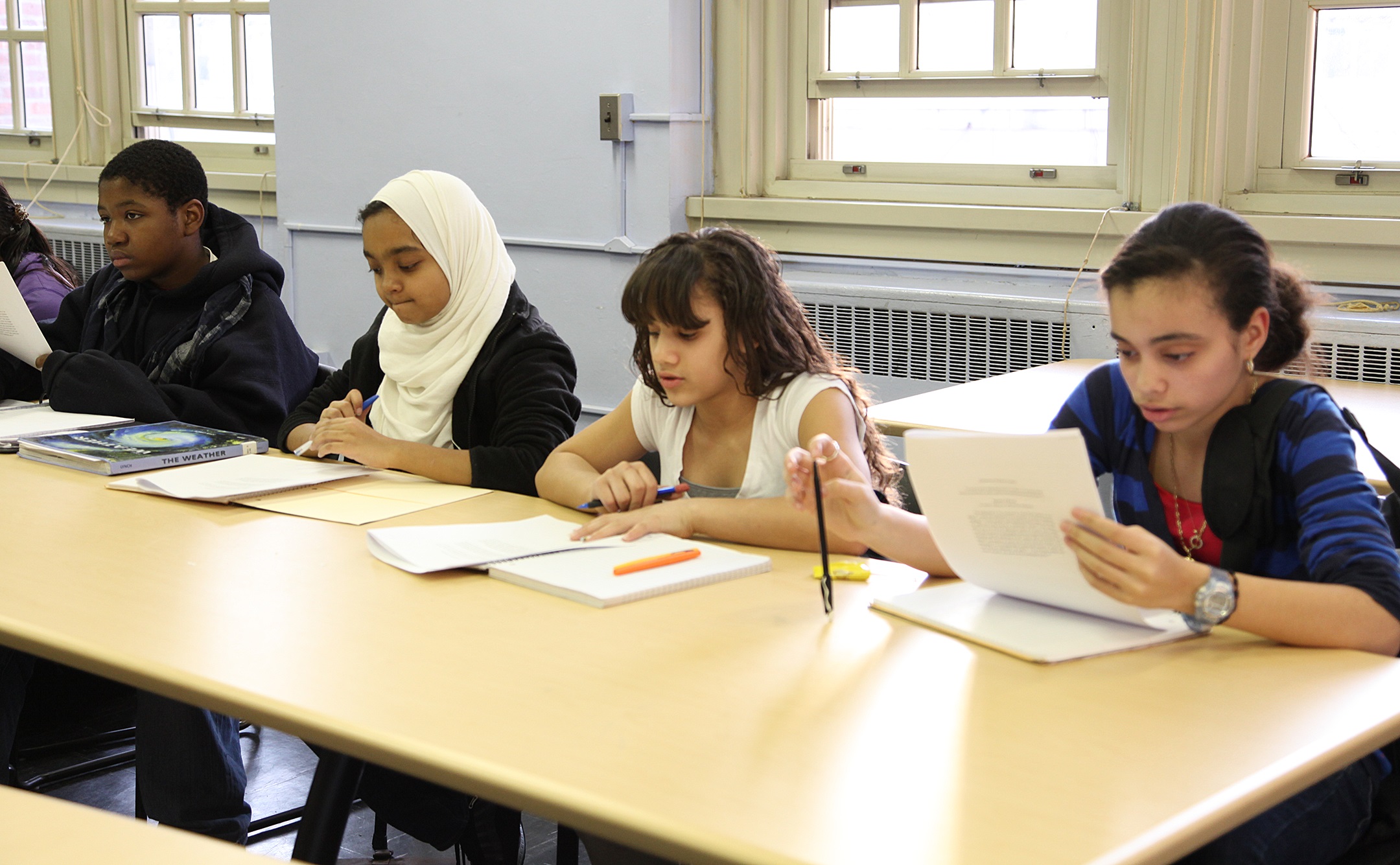Photo: Middle schoolers gain insight into New York’s legal history. Courtesy of photographer Editha Mesina & BHSEC
As the weather gets warmer and students head into spring break, we thought we’d share the thoughts of some of the administrators and teachers in our partner middle and high schools. Aisha Lloyd Williams is the Associate Head of School of George Jackson Academy, a middle school for underserved boys in lower Manhattan. William H. Hinrichs is the Dean of Academic Life at Bard Early Colleges, and the Society has partnered with Bard High School Early College (BHSEC) since 2010 on their lower Manhattan and Queens campuses. These schools have hosted our Judith S. Kaye Teaching Fellows in a program that was established to fund a visiting scholar or faculty member to develop and teach a semester-long course on topics related to the role of the courts in establishing and maintaining democracy in both the State and the nation. You can read about our first Fellow Dr. Julia Rose Kraut and her experiences here and here!
Aisha Lloyd Williams reflects on how the Judith S. Kaye Teaching Fellowship enriches her students:
George Jackson Academy has benefitted greatly from our partnership with the Historical Society of the NY Courts (HSNYC). Our students have been able to learn about the structure and functions of the Judicial Branch of government in New York, meet officers of the courts, visit actual courtrooms, and visit the District Attorney’s office. During their HSNYC class, students are able to engage in a rich dialogue about past court cases, laws, and make connections to themselves and the world around them.
William H. Hinrichs similarly reflects on the nearly decade long partnership between the Society and BHSEC:
Thanks to the Judith S. Kaye Fellowship, BHSEC students have been able to take classes with well-known scholars in New York history and New York law, gaining firsthand exposure to trends in legal thinking, the centrality of New York legal history to the understanding of American legal history and to the larger legal questions that concern us today. These courses also gave students a general foundation in the law, which they would not have had otherwise prior to graduation. Many students in the inaugural classes from Professor Julia Rose Kraut and from the current fellow, Anna Lind-Guzik, report a new or increased interest in pursuing careers in the law due to taking courses with these HSNYC fellows.
Thanks to a series of grants from the HSNYC, BHSEC has developed innovative curricula for middle school, high school and college students focusing on teaching the law through primary source documents that highlight the role of the New York courts in our shared legal history and the importance of legal history to understanding history in general. In particular, the “Lemmon Case” curriculum has been used on multiple campuses and at the middle and high school level. This generous funding allowed our faculty to collaborate on new courses, implement the courses and share materials with both the other Bard Early Colleges and the larger public school teaching community. Follow up grants allowed for further adaptation of curriculum, including adapting a college course from a Kaye Fellow for middle schoolers.
Thanks to further generosity from the HSNYC, BHSEC students were able to meet Justice Sonia Sotomayor and spend a day with a number of justices at A Robes in School program held at the Moynihan courthouse. The contacts of the HSNYC with the New York legal community afford our students opportunities to interact with judges and attorneys whom they would never meet otherwise, including members of the HSNYC board of directors itself.
Laura Hymson, Dean of Academic Affairs and a member of the Social Students Faculty at BHSEC-Queens developed the Lemmon Slave Case materials that Dean Hinrichs described. Dean Hymson talks about her students’ learning in our film produced on the topic:
I don’t think they quite were able before [the Lemmon Slave Case] to see the role of the courts, to see what it means to question constitutional law, to fight for an implementation of state law that is about slavery. What, for them, is the most powerful is understanding and building an argument…
They really got so interested in constitutional law. They wanted to really understand, well what on earth would the founding fathers have meant when they wrote this privileges and immunities clause. Everyone in the class had their own interpretation of what that particular piece of the Constitution was. I’ve never in my life had students say, “Can we look at the Constitution again?” And they wanted to because they really wanted to understand how both sides were using the Constitution to make an argument for different reasons.
As these administrators and faculty members illustrate, programs funded by the Society provide students with enrichment opportunities that they may not have otherwise received. Our success is based upon our partnerships with faculty to open a window for these students to understand the important role the courts play in our democracy and in their personal rights within that democracy. Educating the next generation is critical, and we look forward to expanding our partnerships to increase the number of students impacted by the enrichment our curriculum provides.

